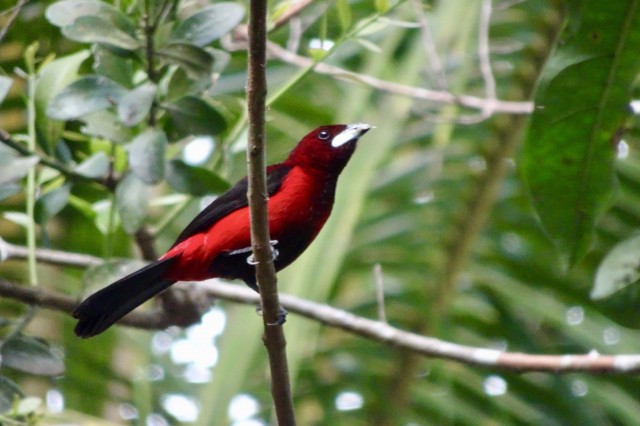The Hart Museum remains closed. Los Angeles County has approved a plan to transfer the William S. Hart Museum and Park from the County to the City of Santa Clarita.
Backyard Birding With NHM: Meet the House Finch
What’s red and gray and all over L.A.? It’s the house finch.
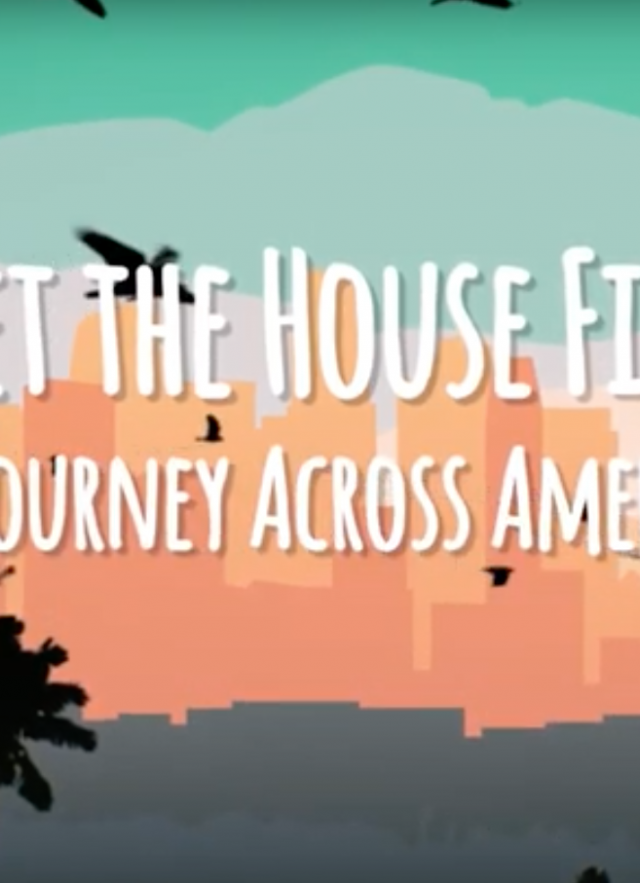
Take the red bird pill
Look out your window right now at any telephone pole, light post or electrical wire, and there's a good chance you might see a little bird with some pinkish-red around its beak (or forehead, or throat, or rump) livening up the grayish-brown feathers on the rest of its body. That would be a male house finch. The female house finch (and juveniles) are brown everywhere and streaked.
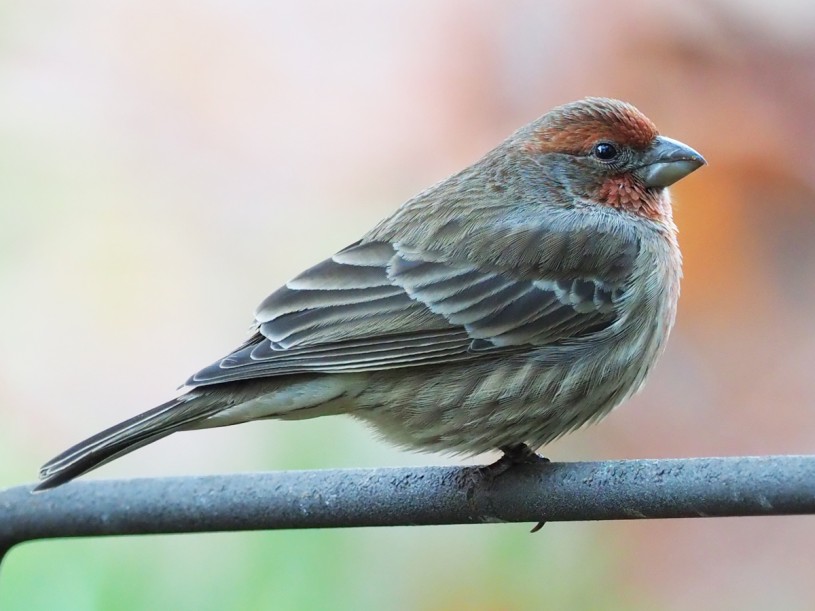
About that red bird...
Male house finches have a pop of color that females don't. In many bird species, the males are flashier—picture the bejeweled green and blue feathers and imposing tail plumage of a peacock—where the females of the species are less colorful—picture a peahen (you probably can't). These differences between males and females are an example of sexual dimorphism, and it can help even the most casual birder tell the difference between birds in the wild. If you look closely, you might find male house finches actually come in many shades, from deep red to very light orange. Keep your eyes on these common birds and you might just catch a rarer hue.
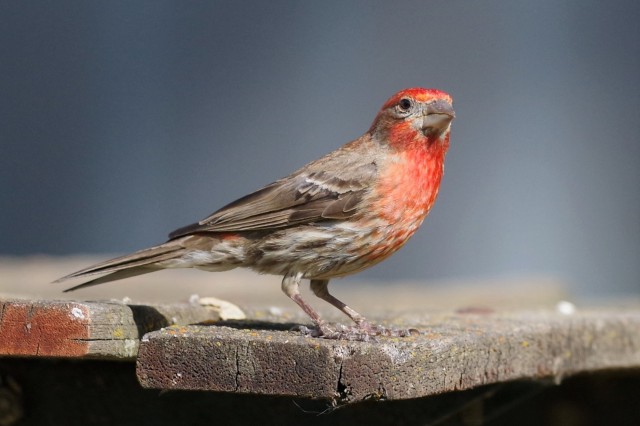
image by iNaturalist user kathlinsimpkings
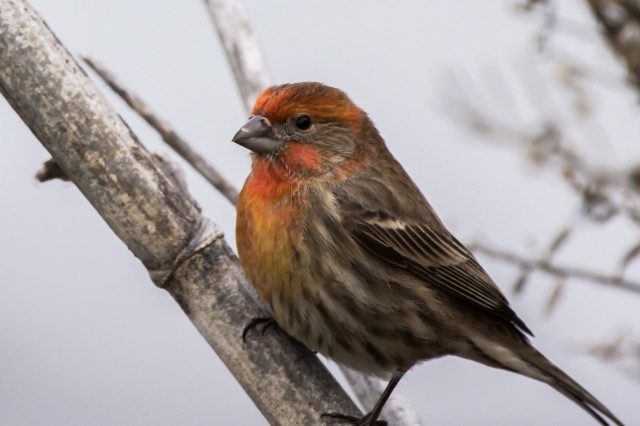
image by iNaturalist user lyneisfilm

image by iNaturalist user lyneisfilm
1 of 1
image by iNaturalist user kathlinsimpkings
image by iNaturalist user lyneisfilm
image by iNaturalist user lyneisfilm
While every state except Alaska is now home to the house finch, it wasn't always the case. Once popular pets sold as 'Hollywood Finches', owners and sellers of house finches released them into the wild after the Migratory Bird Treaty Act passed in 1918. Birds that had been found only in Mexico and South West of North America are now all over the country, crowding out other species. The story of how all of North America (and Hawaii) became house finch country illustrates how quickly humans can change the landscape around us without meaning to.
Watch These Birds
House finches are a great bird to start watching out for. They're easy to spot, likely in your area and have more to show you the more you look. In recent years, they've also been struggling with their own epidemic disease: Mycoplasma gallisepticum.
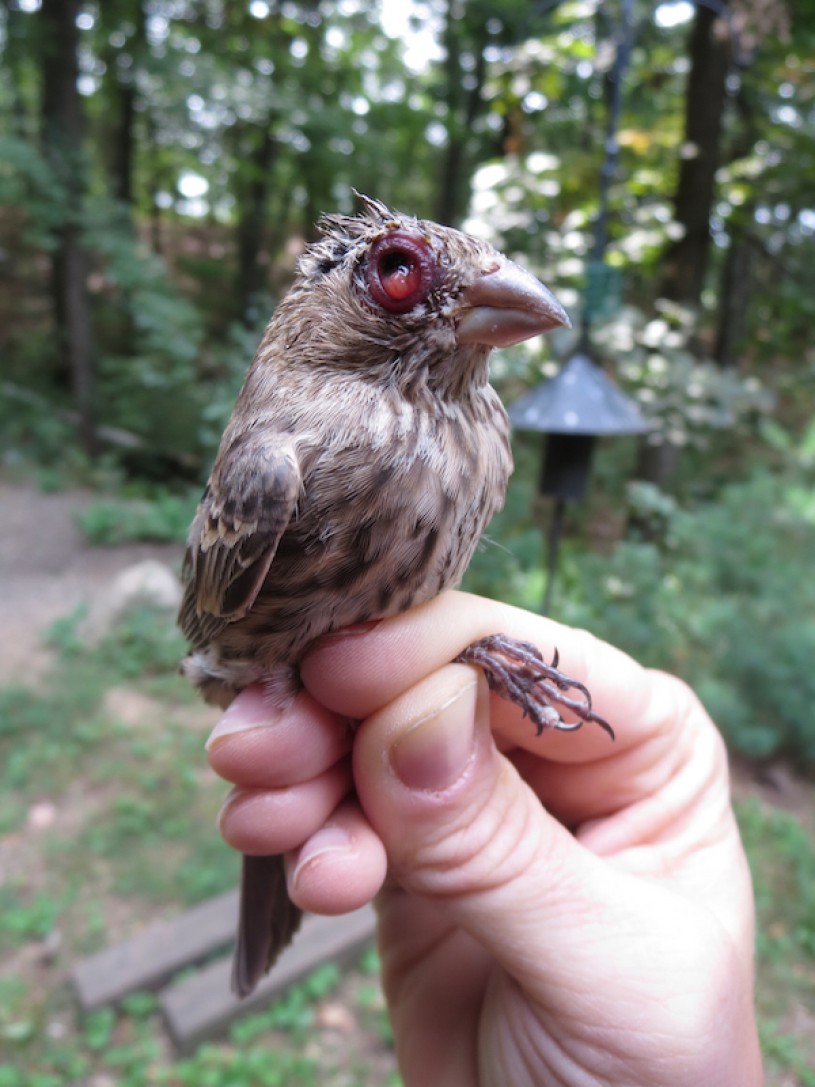
If you see a sick bird at your feeder, take it down for a couple of weeks and remember to keep it clean. You'll be helping house finches to keep from spreading and catching this disease.
Remember, you can also help ornithologists like Dr. Shultz—and other scientists around the globe—by posting what you see on iNaturalist. Experts will identify wildlife even if you can't, and you'll be joining thousands of other community scientists to help us understand our natural world—even when it's in our backyards.
